Prevention measures
R. Gartig proposes the following protective measures:
Workers who have completed repairs in buildings infested with house fungus should, before further use, possibly thoroughly clean and wash all their tools. Boots and clothing should also be thoroughly cleaned.
An old tree, if there are obvious traces of a fungus infection on it, should not go to new buildings. An old, destroyed tree should, if possible, be burned as soon as possible after removing it during repairs. Fresh wood should not be stacked next to damaged wood.
The new structure must be protected from all contamination by its workers. The latrines should be arranged in such a way that contamination of the new building does not follow in an indirect way.
For a cushion under the floor (lubricants), washed, coarse sand or broken brick should be preferred. It is necessary to avoid coke, ash, etc., as well as masses rich in humus and generally damp.
Building wood should be as dry as possible.
The new building should dry out enough
Painting floors with oil paint as late as possible.
The floors should not be in close contact with the walls.
Particular attention should be paid to the arrangement of the correct air draft in the lower rooms and under the floor.
Maintain cleanliness and do not allow water and impurities (in laundries, bathrooms, etc.) to fall under the floor.
Mutinus Ravenel mushrooms and canine: photo and description, features of the development of the genus
In the photo Mutinus ravinelii
Ravenel's mutinus (Mutinus ravinelii) is confused with the canine mutinus (Mutinus caninus), which has a yellow-beige leg.
The kingdom of mushrooms occupies a separate place in biological science. There are more than 250 thousand of them. Mushrooms can live both on land and in water, with different readings of humidity and temperature.
Some species may outwardly be similar to each other, or they may be completely different, for example, the genus Mutinus, which has a very extraordinary appearance, bears little resemblance to a mushroom in the minds of most people.
They are considered quite rare.
He came to Western Europe in the middle of the last century from America. But on the territory of Russia you will not meet him so often. Loves fertile soil, grows actively at high humidity.
The main features of the development and structure:
- in the development process, there are two stages (ovoid and the appearance of a cylindrical leg);
- the body of the mutinus is spongy, porous;
- the stem ends with a tip that differs in color (usually brighter);
- it multiplies, like all mushrooms, by spores that are contained in the formed mucus with an unpleasant, putrid odor;
- the spread of spores occurs with the help of insects.
Mutinuses are not edible. But some mushroom pickers say that in the developmental stage of the "testicle", they can well be used in cooking and have the taste of an ordinary mushroom. But note that no research has been carried out on this score. Therefore, we still do not recommend eating it.
See what the mutinus mushroom looks like in the photo:
Dog mutinus: photo and description
Even an experienced mushroom picker cannot always boast that he saw him in the forests of our region. This species is more common in America, from where it was introduced to Europe. Canine mutinus, the description of which will follow below, is listed in the Red Book, a rather rare species of this species of fungi.
In the photo Mutinus dog
By its appearance, it resembles a part of the body of a dog, which is not clear how it sticks out of the ground. The color of the mutinus, starting from the ground, is pale pink, which gradually turns into a bright red tip. On the leg, under the cylindrical part, there is a mucous girdle.
Its size is no more than 2 cm. The shade of the discharge is greenish-brown. The spores of the fungus ripen here. Flies and other insects are constantly circling in this part. They are attracted by the specific smell that this mucus emits. In turn, it is the insects that carry the spores of the fungus.
The development of the canine mutinus fungus begins with the appearance of the fruiting body. It looks like an egg up to 4 cm in diameter. Has a white color. Further, this egg bursts, forming blades, and the body of the fungus begins to grow from the core. Its height can reach 15 cm. The upper part later becomes pointed and acquires a specific red tint.
See what the dog mutinus looks like in the photo:
Mutinus Ravenel mushroom: photo and description
In the photo, the mushroom mutinus Ravenel
Outwardly, this variety of mutinus has a similarity to the dog. You can meet him in the forest from the end of July until September. Most often it can be found:
- on soils rich in humus;
- in places of decaying wood.
It grows especially quickly after heavy rains.
Outwardly, it looks very strange and not attractive. With all his appearance, he seems to show that he is inedible. In addition, it emits a rather nasty smell. It is for this peculiarity that the people received the name "smelly morel".
See what the Ravenel mutinus looks like in the photo:
In the process of its growth, the fungus goes through two stages of development, like the canine mutinus. Initially, an egg-like formation appears above the ground. Its size is rarely more than 3 cm in diameter. A delicate film formation hides the rudiment of the leg of the body, it looks like a bright red process.
The egg has two lobes that break and allow the porous stem of the body to develop. Its length reaches 9 cm, and in diameter it is no more than 1 cm. Towards the end, the stem has a red pointed tip.
In an adult fungus, the upper part is covered with mucus with spores, which has a dark olive tint and gives off the smell of carrion. It is during this period that flies begin to circle near the mushroom, which are attracted by this stench.
Its pulp is tender and porous.
If you find a mutinus in the forest, then examine it carefully. Despite all its unpleasant appearance, the mushroom looks very extraordinary. Do not rip it off, as this species is quite rare in our area. Perhaps you will not see another such specimen for a long time.
Interesting Facts
Amanita muscaria has poisonous substances. One touch with your hand is enough to get them on the skin. If this mushroom is in your basket, then you can safely throw away the entire crop, it has infected even good specimens.
The color of the cap of the spring fly agaric can be not only white, but also with a gray tint, sometimes even pink. It depends on the place of growth and environmental friendliness.
If you find a fly agaric without white dots in the forest, do not trample or destroy it just because this mushroom is poisonous
Pay attention to its appearance and bypass it. Dangerous species always remain so, you should not risk your health
Description
Poisonous entoloma (Entoloma sinuatum), as you might guess, is a poisonous representative of the Entoloma family. It is a lamellar mushroom that has several names, as well as a Latin synonym for Rhodophyllus sinuatus. It is called tin or notched-lamellar entomola, poisonous pink plate, yellowish-gray, giant.
Poisonous entoloma, according to mycologists, is considered the largest representative of the mushroom kingdom among all entolomas. For the first time, botanist and physician Pierre Buyard wrote about her in 1788, and the first description of a dangerous forest lady was written by the mycologist H. Person at the very beginning of the 19th century.
- the cap is very large, with a diameter of 5 to 17 cm, but often reaches 25 cm.Young fruiting bodies keep a bell-shaped or convex shape for a very long time and have tucked edges, but as the mushroom matures, they become convex-flat, sometimes even outstretched with a large central tubercle and wavy edges. In old fruiting bodies, it may even be slightly concave. Wrinkles often appear in the middle of the cap. The skin is smooth to the touch, becomes slightly sticky when it rains. Surface color varies from off-white or yellowish to ashy, brownish-gray;
- the leg is central, at the base it usually has a thickening, cylindrical in shape, often slightly compressed at the edges.Nice to the touch, smooth and silky, dense, solid in young fruiting bodies, but over time begins to resemble a sponge. At the surface, the cap is slightly mealy, glabrous in the lower part. The height ranges from 4 to 10 cm, and the width - from 1 to 3 cm. The color of the surface is white, sometimes with a gray tint;
- the pulp is thick, firm, firm. The color is white, but under the skin of the cap it has a brownish tint, but does not change color at the break. Unpleasant taste, rancid or mealy aroma;
- plates are notched-attached, very weakly adhered to the peduncle, wide, but sparse. By the way, probably, precisely because of how the hymenophore is attached to the base of the cap, the mushroom got the name "entoloma notched-lamellar". Color varies from dirty yellow in young fruiting bodies to pinkish or reddish in mature ones. In this case, the edges of the plates are colored darker. By the way, in some of the poisonous entolomes growing in Europe, the hymenophore does not have a yellow pigment;
- spores are light pink, smooth, angularly rounded or slightly elongated.
Landscaping application and care
Ash is a very attractive and spectacular flower, with bright corollas and stems up to 90 cm high.It is a perennial decorative deciduous herb that is planted as:
- a bright point in the design of an alpine slide;
- decorating a romantic garden in country style;
- high accent flower garden and landscape park.
In order to avoid accidents, it is not recommended to decorate garden paths, barbecue areas and playgrounds for children with dictamnus. Guests of the garden must be warned about the dangerous properties of the plant.
Care and reproduction in relation to the ash tree is quite simple. It is usually grown from seeds harvested in August. They need to be sown before winter or in winter (in the southern regions) on seed beds, from where they are then cut to a permanent place. In addition to propagation by seeds, they practice dividing the bush and rooting cuttings.
 Currently, traditional medicine uses the plant externally
Currently, traditional medicine uses the plant externally
Fertilizing dictamnus with complex fertilizer is carried out once a year, after flowering, watered only during droughts, the plant is very resistant to pests and diseases.
The bushes are transplanted only in early spring or in September, then they take root better. During transplantation and division, they are brought into a decorative form: dried, broken and faded shoots are removed. They must work with gloves, especially in clear weather.
Common pseudo-raincoat
| Group: | Marsupials |
|---|---|
| Plates: | Absent |
| Colour: | Yellowish, brownish |
| Info: | Looks like a potato |
| Department: | Basidiomycota (Basidiomycetes) |
|---|---|
| Subdivision: | Agaricomycotina (Agaricomycetes) |
| Class: | Agaricomycetes (Agaricomycetes) |
| Subclass: | Agaricomycetidae |
| Order: | Boletales |
| Family: | Sclerodermataceae |
| Genus: | Scleroderma (False Raincoat) |
| View: | Scleroderma citrinum (False raincoat) |
Inedible, mildly toxic in large quantities, causes gastrointestinal upset. An allergic reaction to spores in the form of conjunctivitis, rhinitis, etc. is also possible. However, at a young age, it is sometimes added to food in small quantities, since the taste and smell is somewhat reminiscent of truffles. However, the mushroom is not recommended for use.
Description
The common pseudo-raincoat is more like not a mushroom, but a potato. It has no legs and is attached directly to the ground using mycelium strands. The fruiting body of the common pseudo-raincoat consists of peridium (outer shell) and gleb (inner contents). The pseudo-raincoat itself is small in size, reaching only 6 cm in diameter, the shape of the fruiting body is rounded.
Peridium
The surface of the peridium is smooth or with small scales. The color of the peridium is yellowish or brownish. With age, the upper surface cracks with the formation of small "craters", from a distance resembling warts.
The lower part of the mushroom does not crack, it has a wrinkled surface and tapers slightly towards the ground. A mycelial cord departs from it into the ground.
Peridium in common pseudo-raincoat is relatively thick (up to 0.4 cm).In an overripe fungus, the upper part of the shell ruptures with the release of spore powder into the external environment.
Gleb
Gleb, or the inner part of the pseudo-raincoat, is white in young specimens. Ripening, it becomes almost black with a purple tint with white veins. Overripe gleba becomes greenish brown (brown). The smell of the inside of the mushroom is similar to the smell of raw potatoes.
Spore powder
The spore powder of the common pseudo-raincoat is formed from overripe and dried gleb and has a dark greenish-brown color. The spores in it are large, round, with a mesh surface and with thorns. Individual spores are dark brown in color.
Spreading
Common false raincoat is the most common and widespread of all false raincoats. It grows in Russia (the European part, the North Caucasus and the Far East).
It is a saprotroph and grows on rotten trees and humus-rich soil. The fungus prefers light forests, moorlands, roadsides and clearings. Can grow in moss and sand, singly and in groups. A parasitic flyworm often grows on it.
Similar species
A false raincoat is similar to real raincoats, but differs in that it does not have a false leg.
He also has "doubles" among other false raincoats:
Bulbous pseudo-raincoat
Poisonous (weakly poisonous) mushroom, differs from the ordinary false raincoat not by the warty, but by the nipple-like peridium.
Large-root pseudo-raincoat
It has a pronounced and rather long false stem, it grows only in the sand.
Warty and mastoid pseudo-raincoats
They are smaller, scaly peridium and long pseudopods.
All varieties of false raincoats are inedible. Of these, in Russia, the bulbous, warty and the common pseudo-raincoat itself are most often found.
Edibility
Most sources indicate that the common pseudo-raincoat, like the rest of this genus, is inedible and even slightly poisonous. There is a known method of eating young pseudo-raincoats (they taste like a truffle).
Interesting Facts
When eating this mushroom in large quantities (2 - 3 pieces of a young specimen are considered a safe amount), poisoning may occur. It is manifested by pain in the epigastric region, vomiting and nausea, weakness, visual disturbances and loss of sensitivity in the legs.
If such symptoms occur after using the pseudo-raincoat, it is necessary to drink plenty of water and provoke vomiting. You also need to immediately call for medical help. Due to the risk of poisoning, it is not recommended to collect and eat false raincoats.
Poisonous doubles of porcini mushroom
Despite the fact that the porcini mushroom is considered quite common, and it is difficult to confuse it with a toadstool, it has several inedible counterparts. They are extremely rarely fatal, but can still cause symptoms of severe food poisoning.
The danger of false whites is that they grow in the same area as edible specimens, and sometimes in close proximity to them. In order not to accidentally put such a specimen in a basket, you should know the distinctive external signs of poisonous twins.
Gall mushroom (gorchak)
Outwardly, it is very similar to white, but prefers to grow on well-heated clay and sandy soils. Most often it can be found on the edges and clearings of coniferous forests. Based on the place of growth, it should look like a white pine, although in fact, in terms of external characteristics, it looks more like an oak tree (Figure 2).
From the external characteristics of bitterness should be highlighted:
- The hat is convex, brown or brown.
- The stem is thick, cylindrical, covered with a characteristic mesh pattern, which is absent in true whites.
- The pulp is not of a pleasant creamy or white shade, but slightly pinkish or off-white. The flesh of the gallbladder also acquires pink color when cut or broken.
But the main characteristic feature of this poisonous twin is that it has a pronounced bitter taste, from which the mushroom got its name. This taste not only does not disappear, but also intensifies during heat treatment, so you cannot accidentally eat it. It is the bitterness that is the reason why forest animals and insects do not eat it.

Figure 2. Bitterness pulp
Some mushroom pickers advise to lightly lick the flesh of a suspicious specimen to make sure it is edible. We do not recommend doing this, since the toxins contained in the pulp can disrupt the functioning of the liver, and at high concentrations even cause a deadly disease - cirrhosis.
Satanic
Another dangerous double of everyone's favorite boletus. Since it belongs to the same genus, it really resembles white in the shape of the stem and cap. Deciduous forests of regions with a warm climate are considered a common place of growth, and it prefers to grow under linden or hornbeam (Figure 3).
The characteristic features of the satanic look are considered to be a fleshy and velvety hat. Depending on the place of growth, it can be grayish-white, brown or olive. The latter shade is more common in shady areas with dense young growth, while a light cap color is more common in well-lit areas.

Figure 3. Sectional Satanic Mushroom
But the easiest way to distinguish it is by the color of the leg and the tubular layer. The leg has a deep red color, and the tubular layer can be not only red, but also bright orange. If you cut such a specimen, its pulp will turn bright yellow, and after a few minutes it will acquire a bright blue tint.
Distribution and habitats
Ash, or the burning bush, is a thermophilic plant that grows in Europe, in the lower reaches of the Volga, along the shores of the Black and Caspian Seas, where it is called the Caucasian ash tree. The climatic conditions of southern Siberia, as well as such Asian countries as Turkey, Syria, Iran, the central regions of China and Korea, are also suitable for it.
In nature, the flower prefers moderately moist soils with good drainage, willingly settles on rocky and sandy loam slopes, on the edges, among the undergrowth of light forests. In culture, it is grown almost everywhere, except for the regions of the Far North. This is one of the rare crops that tolerate alkaline soils well.
Where and when does the bruise mushroom grow?
The Bruise mushroom is protected by law in some countries, so it is practically not harvested. On the territory of the Russian Federation, it is impossible to cut off wild-growing blue gyropores. But, it is in Russia that they are very common. You can find this mushroom in mixed and deciduous forests. Most often, bruises grow in birch groves, since it is with this tree that mycorrhiza is formed.
You can often find this mushroom under an oak or chestnut tree. The bruise fungus grows on the north side, preferring sandy, moist and acidic soils. The beginning of the fruiting season is in late June or early July. The fruiting stage ends in September. This mushroom needs moisture and warmth to grow.
Precautionary measures. Since it is forbidden to collect this mushroom, you can find it quite often.
The advantages of the mushroom are that it has practically no analogues. At least among the toxic and inedible mushrooms, there is not a single one that looks like a bruise. Gyroporus chestnut is one of the very similar species, but it is distinguished by the inability to acquire a blue, ink shade
Since it is forbidden to collect this mushroom, you can find it quite often. The advantages of the mushroom are that it has practically no analogues. At least among the toxic and inedible mushrooms, there is not a single one that looks like a bruise. Gyroporus chestnut is one of the very similar species, but it is distinguished by the inability to acquire a blue, ink shade.
Stonecrop description
Name
The telephium cleaner "Herbstfreude" or "Herbstfreude" is the scientific Latin name for Sedum telephium Herbstfreude. The genus of sedum plant Telefium in the middle of the 20th century by the Japanese botanist Hideaki Okhba was isolated from the sedum species into a separate genus. It is also called common seducer. The exact name of this species is Hylotelephium telephium. This classification group includes up to 28 varieties of stonecruisers, one of which is the Herbstrfroyde telephium. For the peculiarity of the structure of the leaves, it is called thick-leaved sedum. Synonymous names - Hare cabbage, Skripun.
Similar plants
- Sedum large ordinary - similar to the Herbstrfroyde variety with high shoots, up to 60 cm in height. Leaves are oval, oblong.
- The Rosie Glow sedum variety is also a shrub variety. The flowers are bright pink, fragrant.
- The Hub Gray ochitnik also blooms profusely with pink inflorescences. The leaves are covered with a waxy bluish-gray bloom.
- The sedum common "Ruprecht" is similar to the "Herbstrfroyde" variety in the height of a compact bush. The leaves are rounded, glaucous.
- Sedum "Xenox" is a hybrid variety of an ordinary telephium. It grows compactly, the inflorescences are dense, pale pink.
Botanical characteristics, birthplace and prevalence
The telefium ochter "Herbstrfroyde" is a perennial succulent of the Tolstyankovye family, belongs to herbaceous ornamental plants. The plant is a tall shrub species of garden sedum. In nature, the variety grows in North America, Asia, and Eastern Europe.
It is widespread in the European part of Russia, Siberia, and the Far East. Natural habitat - pine forests, sandy soils, rocky surfaces, ravine slopes. Grown in the garden, along the curbs, on alpine slides and multi-tiered flower beds.
What does it look like?
The Herbstrfroyde telephium cleaner grows in a tall, neat, compact bush. Stems are straight, cylindrical, up to 40 - 60 cm high. Shoots are few or single, light green in color. The leaves grow alternately, fleshy, juicy in structure. The leaf plates are pressed at the top, sedentary.
The leaves are inversely lanceolate, oblong. The base of the leaf is wedge-shaped, the edges are serrated, rounded. Leaves length - up to 6 - 6 cm, width - 2 - 3 cm. Leaves are bright green, shiny, there are varieties with a bluish tint, purple, brown, depending on the sub-variety. The rosette of leaves is large, gives many daughter shoots. The flowers are small, bell-shaped.
The flowers themselves are pink, there are raspberry shades. The inflorescences are voluminous, dense, large, corymbose in shape, located at the top of the stems. Petals are oblong, pointed at the ends, up to 0.5 cm in length. Flowering is long, lasts more than a month.
Reference: at the beginning of flowering, the flowers are light pink, after which they acquire rich shades of bright red. In autumn, the flowers turn brown. The bush is decorative throughout the season.
The seeds ripen in September - October and have good germination. Seeds are small, dusty. The roots are powerful, tuberous, dense.
Is it easy to grow and how long does it live?
The telephium cleaner "Herbstrfroyde" can grow in one place without transplanting up to 4 - 5 years. With proper care and timely pruning, the plant can live for more than 10 years. The variety is drought-resistant, tolerates summer heat well. Differs in the duration of flowering until frost. In the southern regions, it can bloom before snow falls, while maintaining the decorative effect of the bush.
Important: in temperate climates in snowless winters, the bush partially falls off, additional care is required.
Easily propagated by seedlings and dividing the bush. Differs in fast rooting, good adaptation to new conditions. The flowers are fragrant, are considered melliferous plants, attract bees, bumblebees, butterflies.
The leaves are used in folk medicine. Tinctures are used as a tonic, tonic. Also, raw materials are used in the manufacture of homeopathic medicines for disorders of the gastrointestinal tract.
Recipes
Ash products should be used with caution and after consulting your doctor. Usually, on the basis of this plant, an ointment is prepared for the treatment of skin diseases, as well as a decoction and tincture as a diuretic and sedative.
Ointment
To prepare the ointment, dry roots of dictamnus are crushed in a coffee grinder and mixed with petroleum jelly in a ratio of 1: 20. Mix thoroughly, let it brew for a day, then store in the refrigerator. The ointment is applied to the affected area with gentle circular motions.
Decoction
1 teaspoon of root powder, pour 2 cups of boiling water and simmer for half an hour in a water bath. After cooling, the broth is filtered, stored in the refrigerator. Drink a glass a day before meals in three divided doses.
Tincture
A teaspoon of dry root powder is poured into a glass of high-quality vodka or alcohol (40 degrees) and insisted in a dark cabinet for 2 weeks. The product being prepared is shaken once a day. The strained tincture is consumed half an hour before meals, 40-50 drops.
 Ash surrounds itself with a poisonous cloud of essential oil
Ash surrounds itself with a poisonous cloud of essential oil
Burning Bush is an example of a plant that is admired for its beauty and requires respect and caution. Romantic hot pink candles with emerald green at the base look luxurious in gardens and rockeries
However, they should be admired from some distance - the plant does not tolerate familiarity and surrounds itself with a poisonous cloud of essential oil.
Taxonomy
Title edit code
There are two equal basionyms - Polyporus sinuosus Fr., 1821 and Poria vaporaria Pers. : Fr., 1821. Since under the name Poria vaporaria often understood different mushrooms, many authors consider it preferable Polyporus sinuosus (≡Antrodia sinuosa). Taxon with epithet vaporarius was not transferred to the genus Antrodius.
Specific epithet sinuosa means "curved, winding". vaporaria means smoky.
Synonyms edit code
- Amyloporia sinuosa (Fr.) Rajchenb., Gorjón & Pildain, 2011
- Boletus vaporarius (Pers.) Pers., 1801
- Coriolellus sinuosus (Fr.) A.K.Sarkar, 1959
- Coriolellus vaporarius (Pers.) Domanski, 1965
- Coriolus galzinii (Bres.) Bondartsev & Singer, 1941
- Coriolus sinuosus (Fr.) Bondartsev & Singer, 1941
- Coriolus vaporarius (Pers.) Bondartsev & Singer, 1941
- Irpex galzinii Bres., 1908
- Physisporus sinuosus (Fr.) Gillet, 1878
- Physisporus vaporarius (Pers.) Gillet, 1878
- Polyporus sinuosus Fr., 1821basionym
- Polyporus vaporarius (Pers.) Fr., 1818
- Polystictus sinuosus (Fr.) Lloyd, 1917
- Poria sylvestris Romell ex D.V. Baxter, 1932
- Poria sinuosa (Fr.) Cooke, 1886
- Poria sinuosa subsp. vaporaria (Pers.) Bourdot & Galzin, 1925
- Poria vaporaria Pers., 1794
- Spongiporus sinuosus (Fr.) Aoshima, 1967
- Trametes galzinii (Bres.) Pilát, 1940
- Trametes sinuosa (Fr.) Cooke & Quél., 1878
- Tyromyces vaporarius (Pers.) M.P. Christ., 1960
Biological description
Fruiting bodies are annual, prostrate, sometimes reaching 20 cm with age, thick, hard, with white thickened or, conversely, thinned edges. The spore-bearing surface (hymenophore) is white-cream or light brown, with angular or irregularly sinuous pores.
The hyphal system is dimitic; cystids are absent. Basidia with 4 spores, clavate. The spores are usually cylindrical, uncolored, non-amyloid, 4-6 x 1-2 microns.
The ascomycete Calcarisporium arbuscula Preuss, 1851 sometimes parasitizes fruit mushrooms of this species.
Similar views edit code
Sinuous anthrodia is easily identified by irregular pores on the hymenophore and by light brown dried fruit bodies.
- Antrodiella rata (G. Cunn.) P. K. Buchanan & Ryvarden, 1988
- Ceriporiopsis aneirina (Sommerf.) Domanski, 1963
- Flaviporus americanus (Ryvarden & Gilb.) Ginns, 1984
- Haploporus papyraceus (Schwein.ex Cooke) Y.C. Dai & Niemelä, 2003
- Oxyporus corticola (Fr.) Ryvarden, 1972
- Oxyporus latemarginatus (Durieu & Mont.) Donk, 1966
How to distinguish the false counterparts of a poisonous mushroom?
The similarity of the white amanita with the White float, which is an edible mushroom, was found. They will differ in that the edible species lacks a ring and there is a rather pleasant smell. Also edible Volvariella is beautiful a bit like a white fly agaric.Their difference can be determined by the same unpleasant smell of a poisonous mushroom, as well as the presence of a ring in it. The cap of the volvariella looks more grayish and sticky, the cap of the fly agaric is white.
The former russula is distinguished by the absence of a ring, while the leg is much thicker than that of the fly agaric. The plates are fragile, brittle. The Volvo is absent, as are the scales that cover the poisonous mushroom. Smell is key, russula smells good. The white fly agaric in the photo can be viewed in more detail.
White fly agaric and umbrella
Another double of this dangerous mushroom - white umbrella.
| Mushroom names | Smell | Volva | Leg | Growing places |
White fly agaric |
Chlorine, unpleasant | There is | Fibrous but hollow | Loves shade, grows in forests |
|
White umbrella |
The aroma is pleasant, the taste is slightly tart | Absent | Rigid, fibrous | Prefers open spaces: meadows, pastures, forest edges and forest glades. |
If, when collecting mushrooms, pay attention to various trifles of appearance, places of growth and aroma, then it is easy to bring home only useful specimens.
Amanita muscaria and champignon
Another mushroom that inexperienced hunters may confuse with the white amanita is forest champignon. The result of such a mistake can be very deplorable.
| The name of the mushroom | Hymenophore color | Leg | Smell |
White fly agaric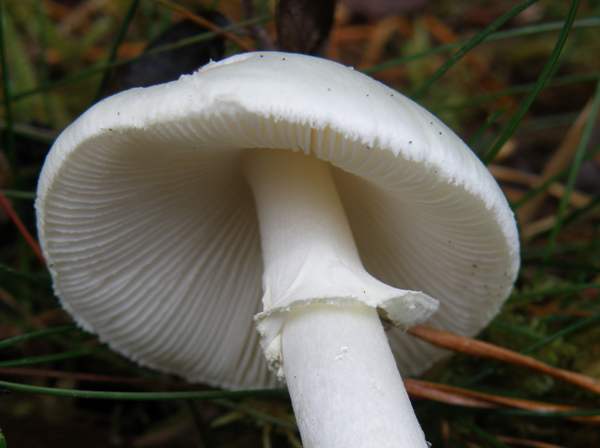 |
White | Thin, hollow | Unpleasant, repulsive |
Forest mushroom |
Light pink records | Thick, strong | Pleasant mushroom |











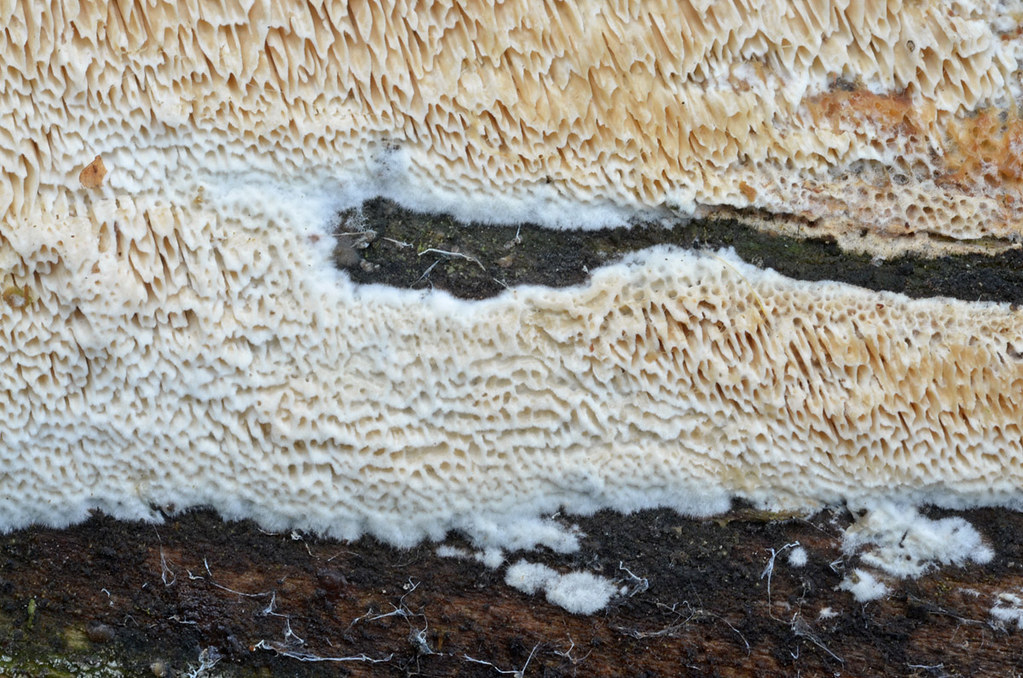


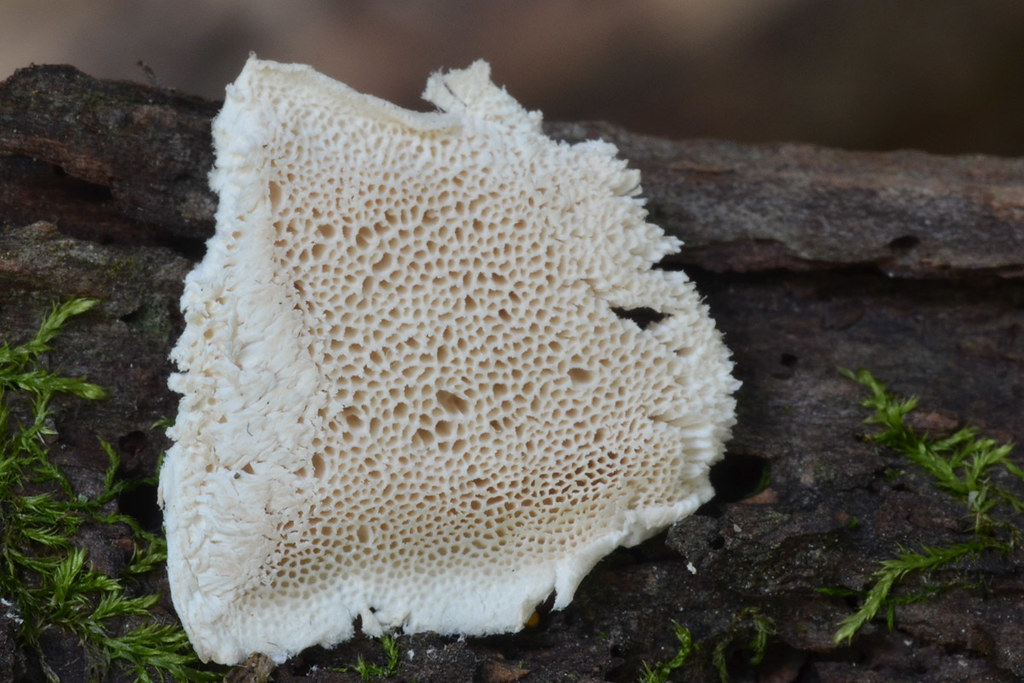



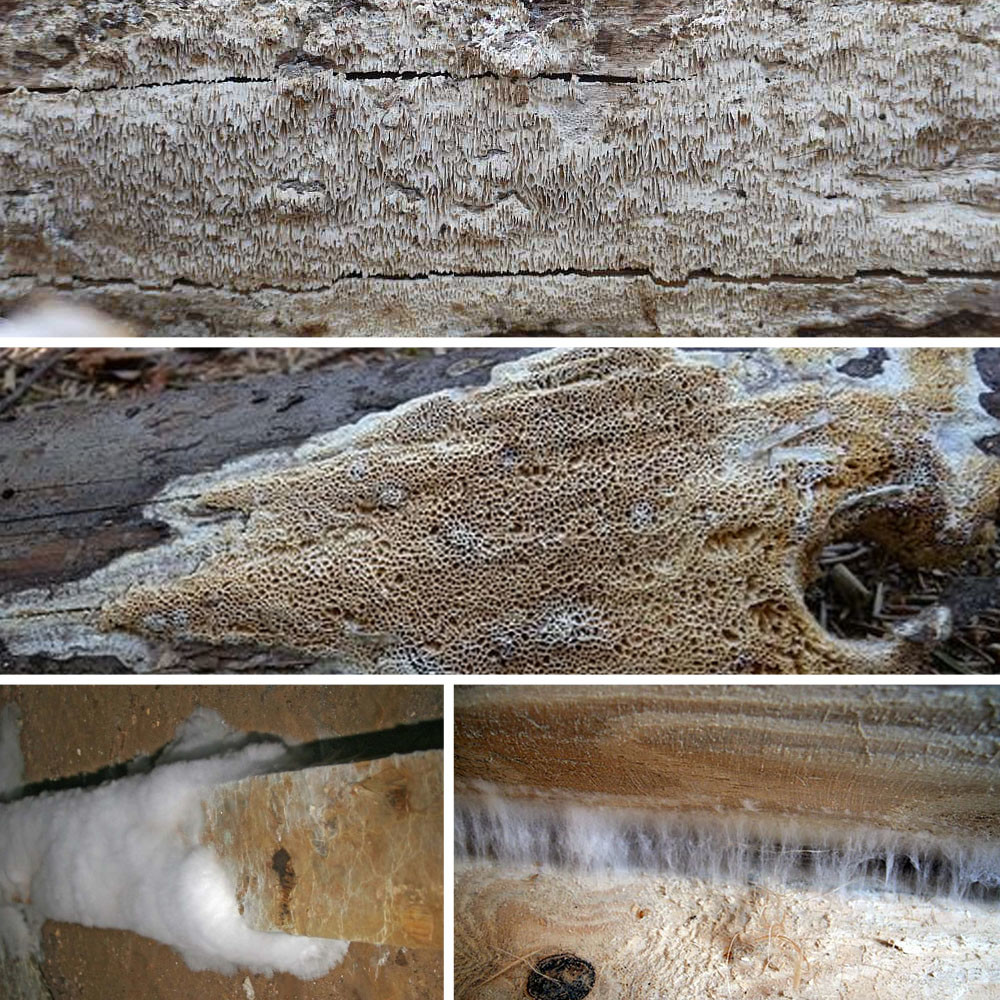





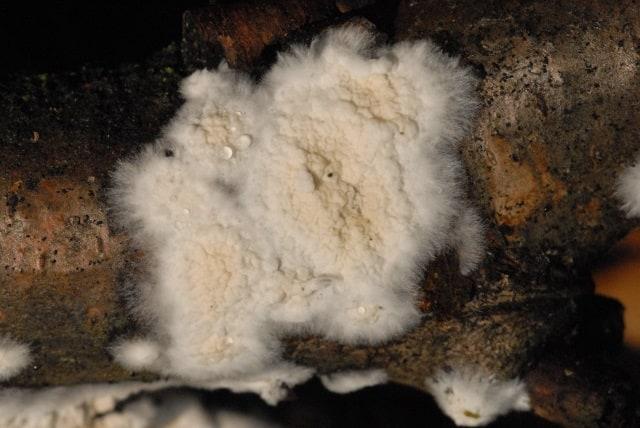


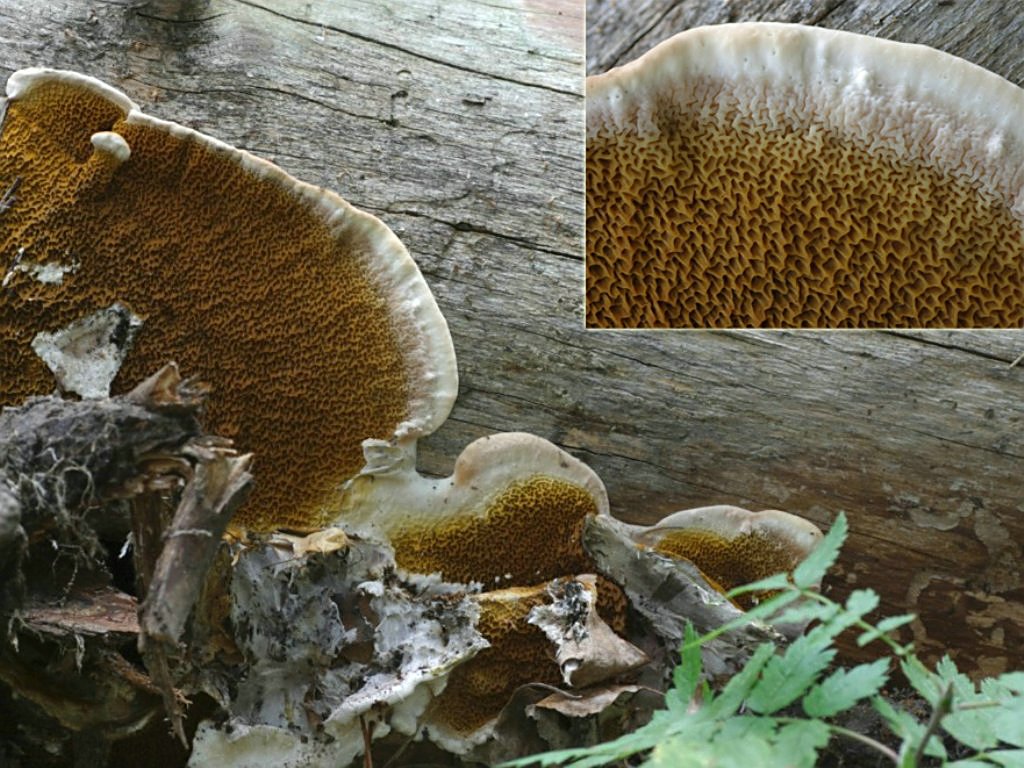


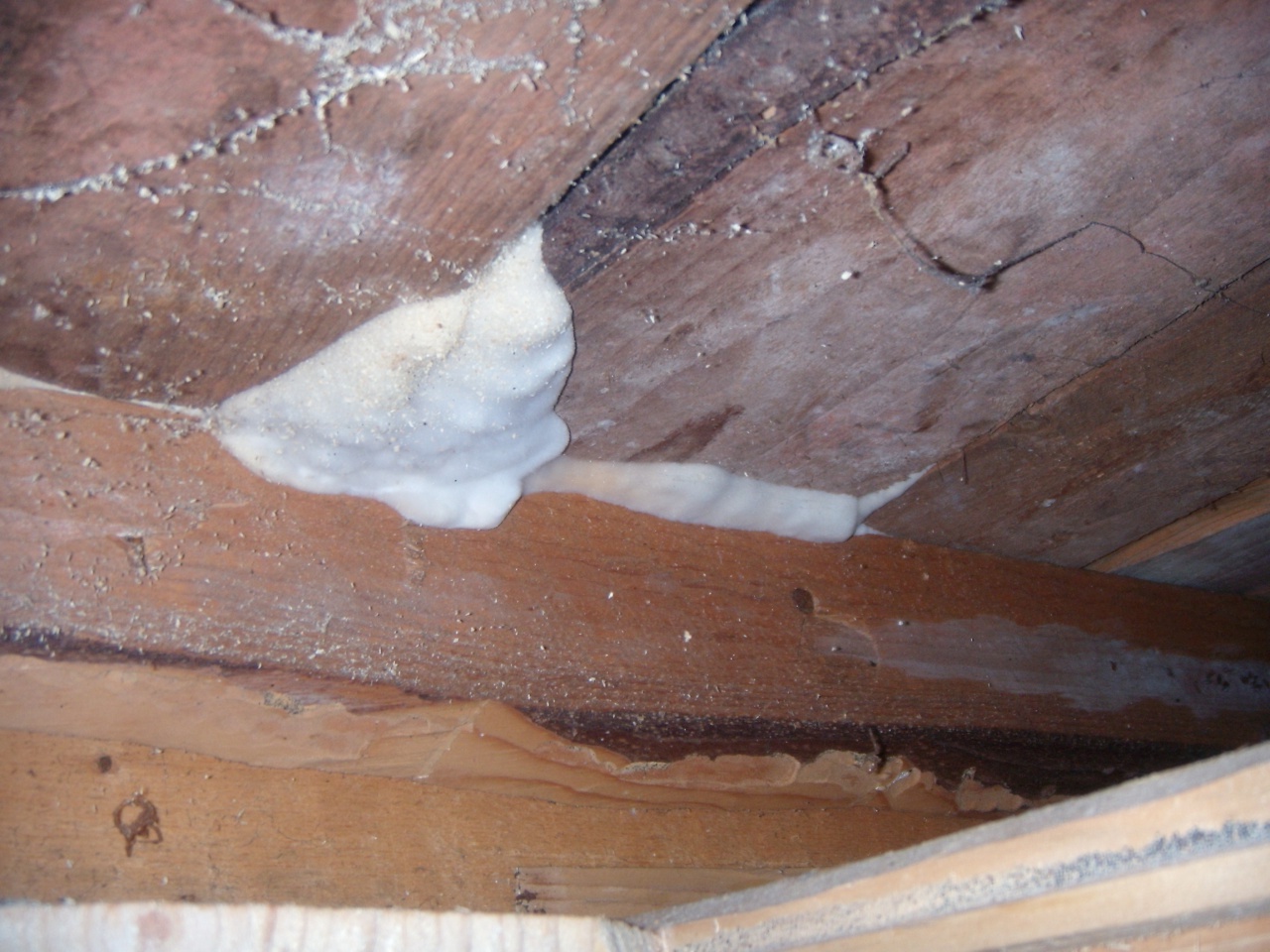

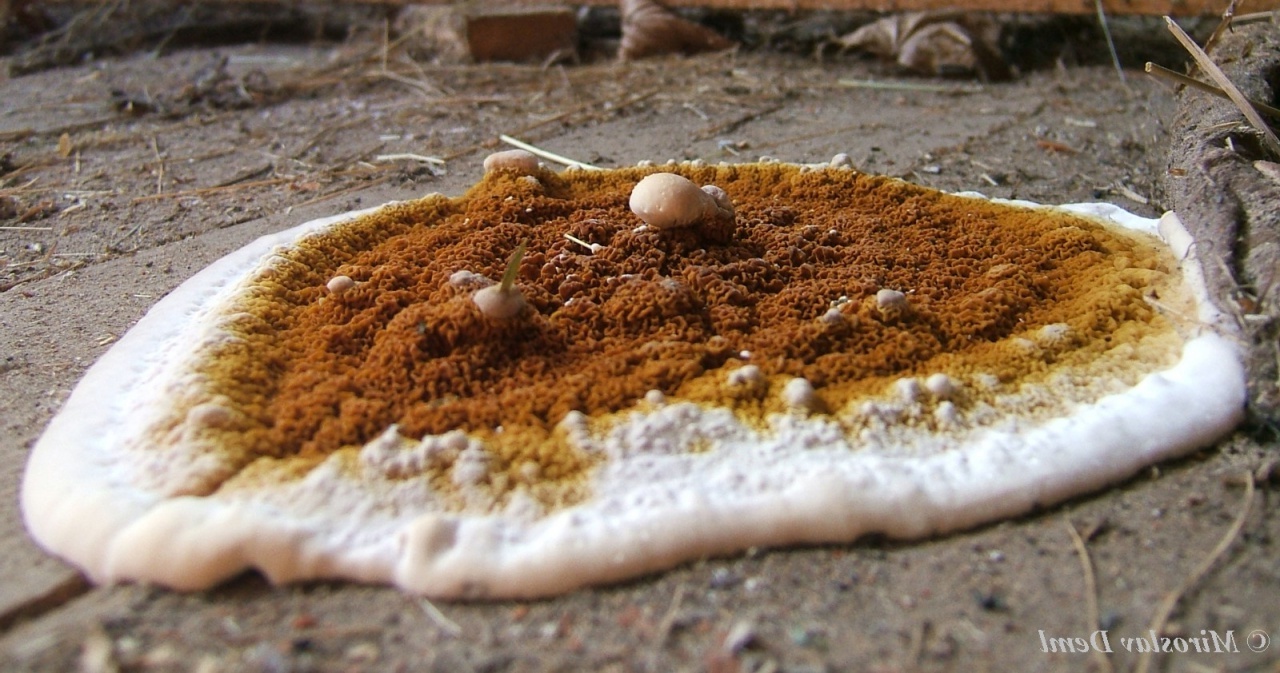

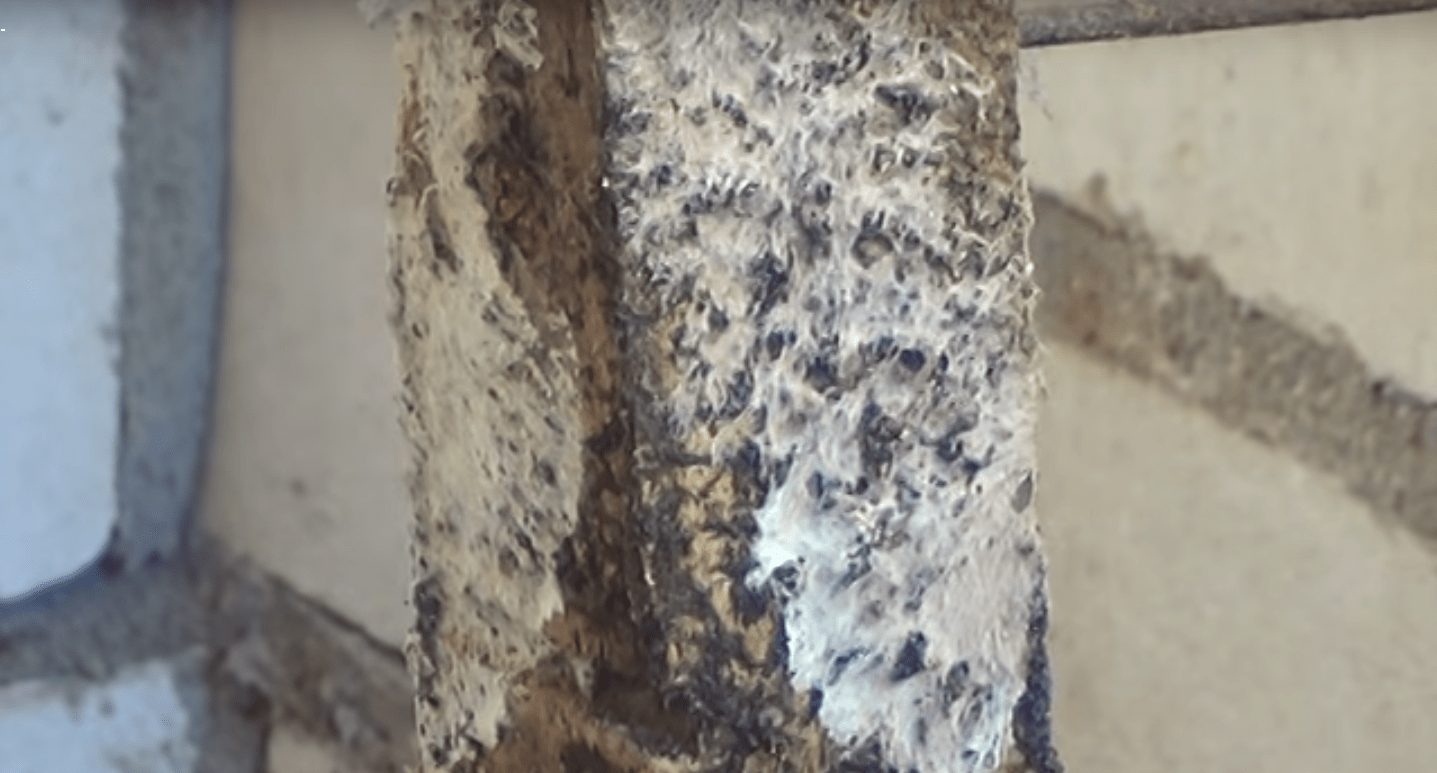
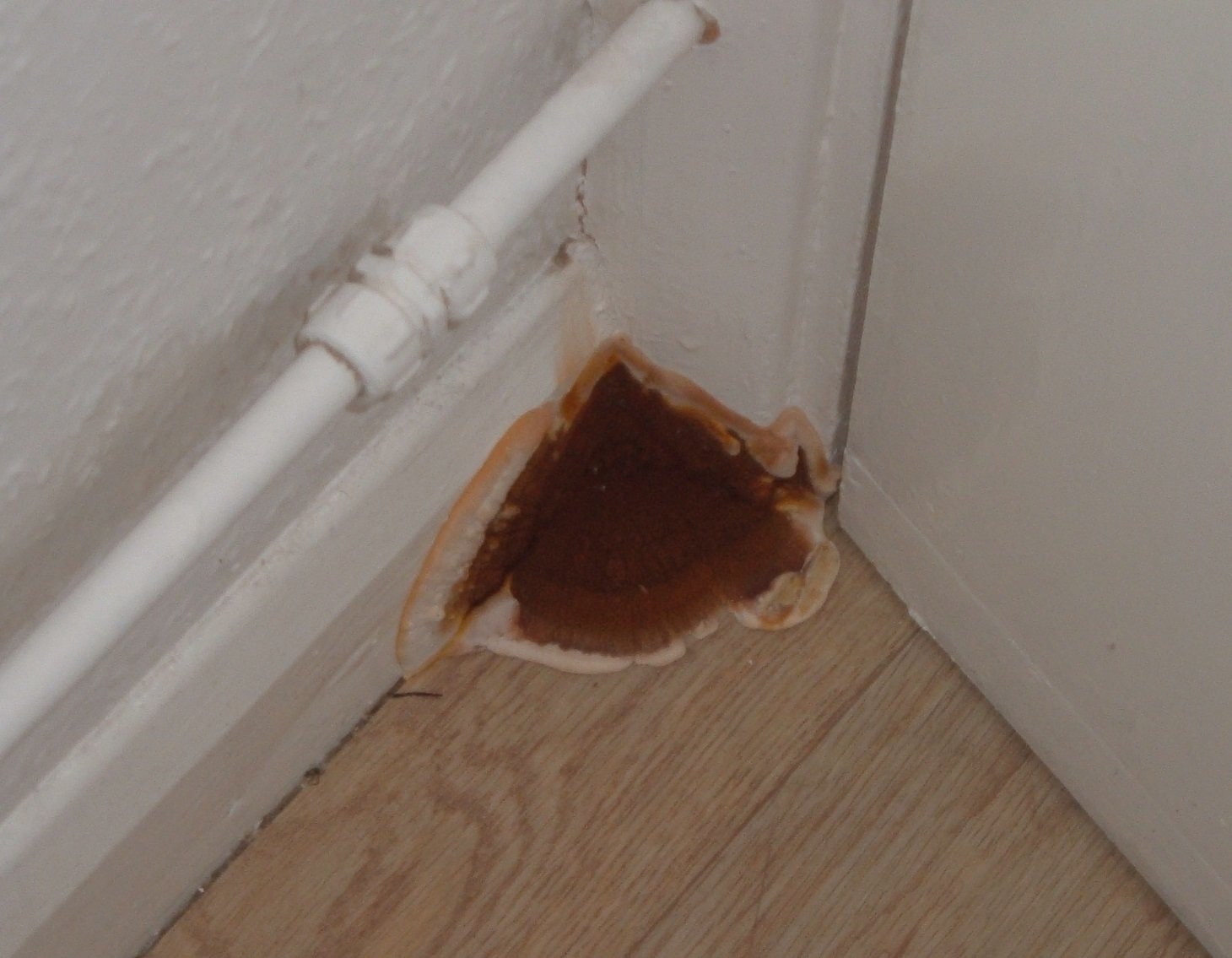
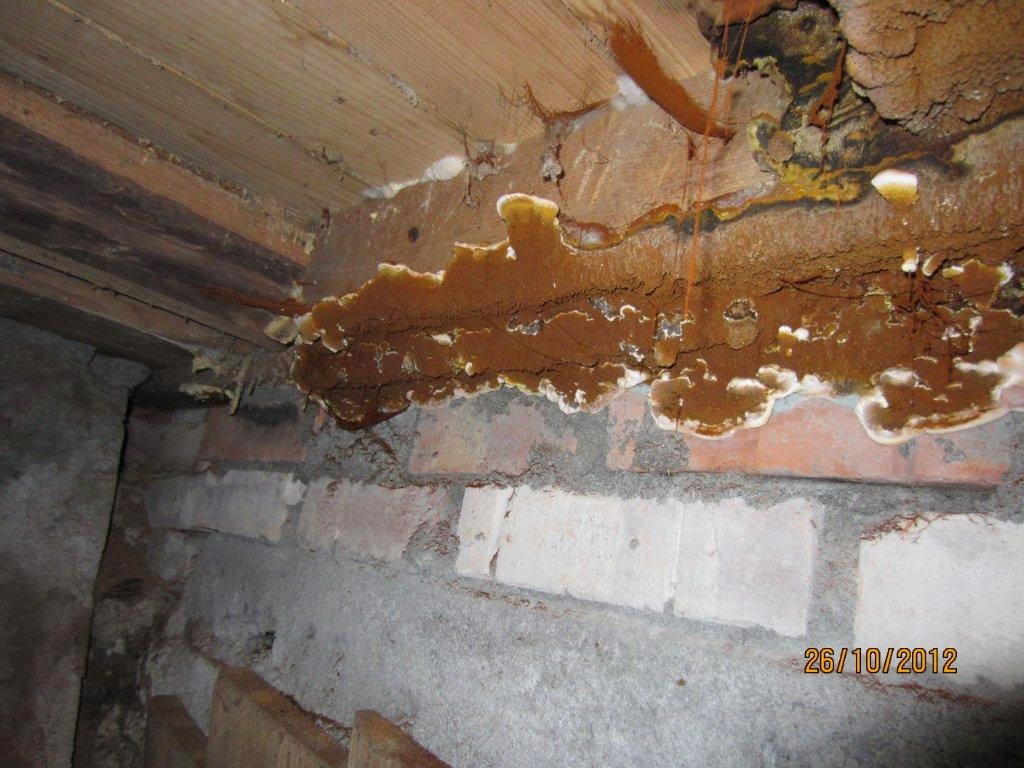



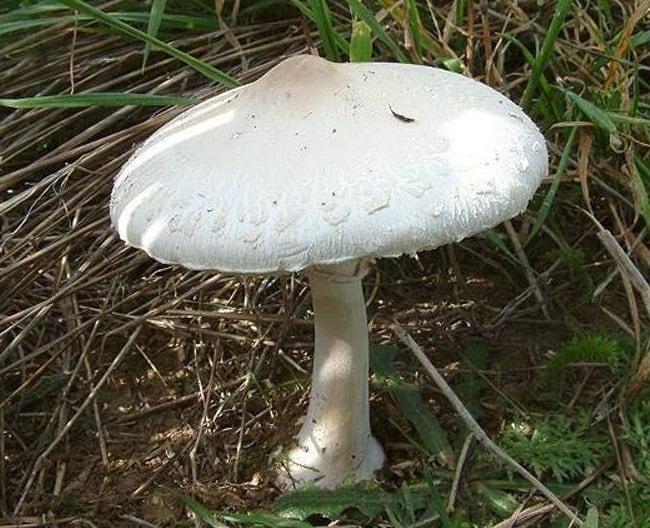 Field (white) umbrella
Field (white) umbrella




